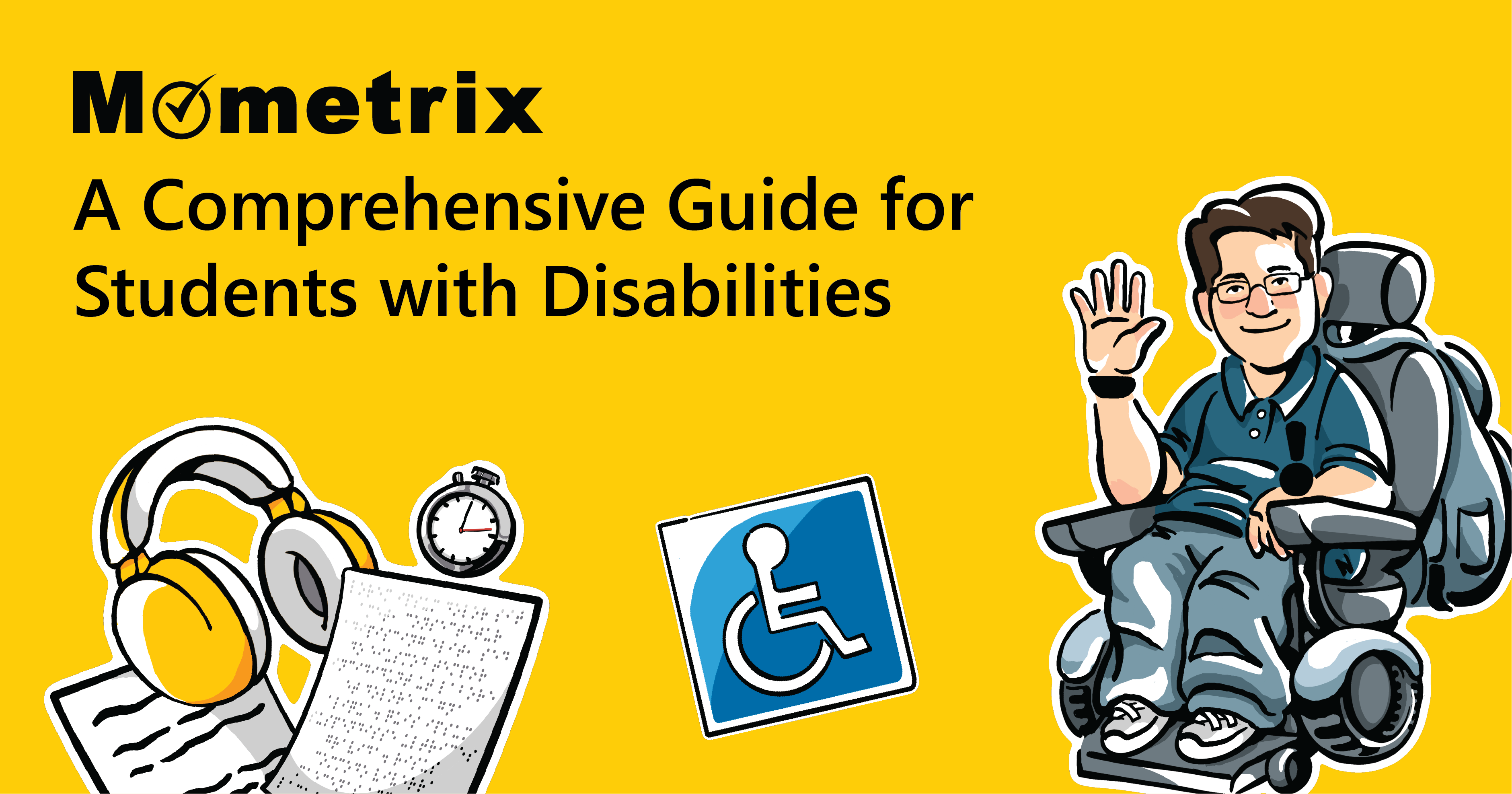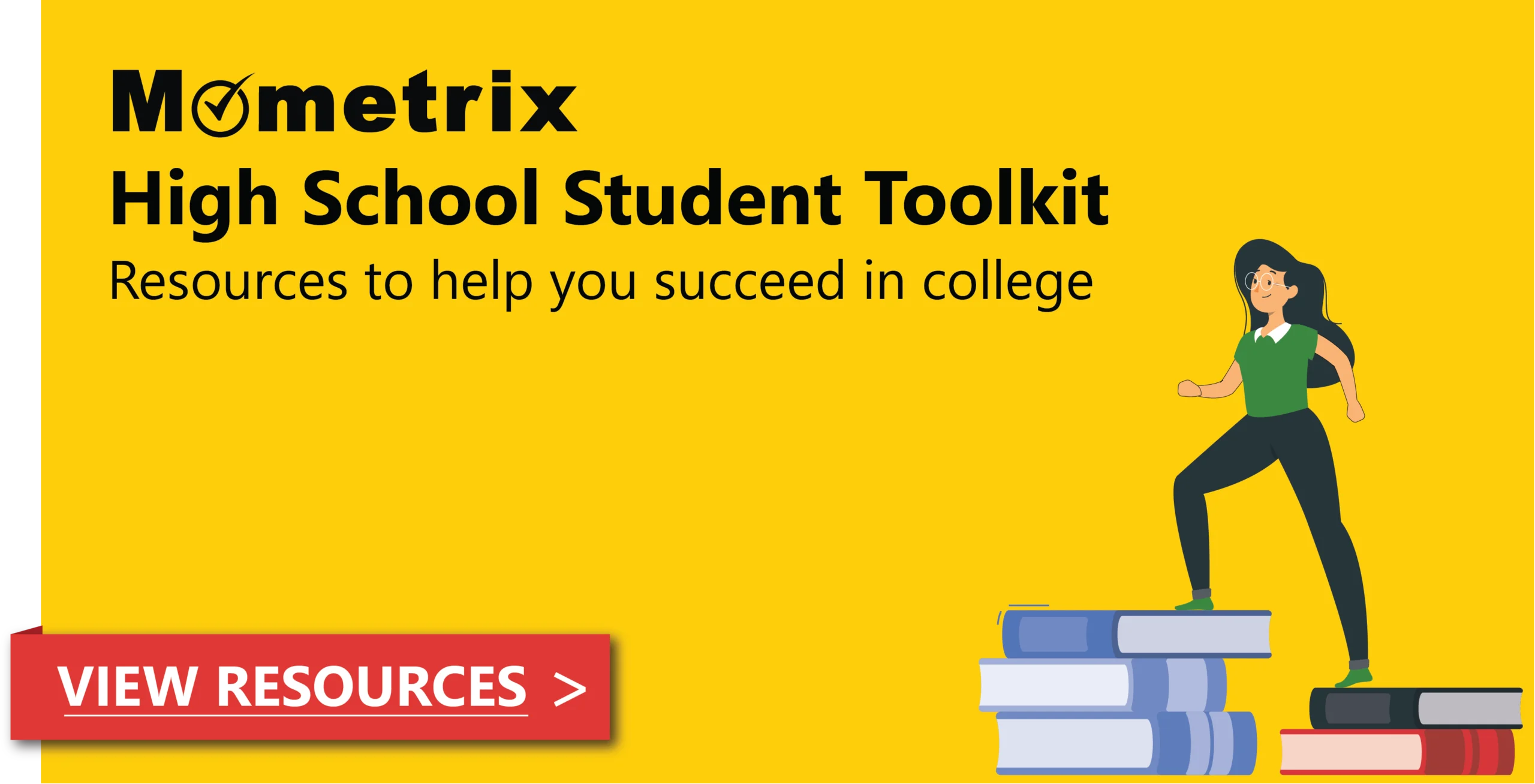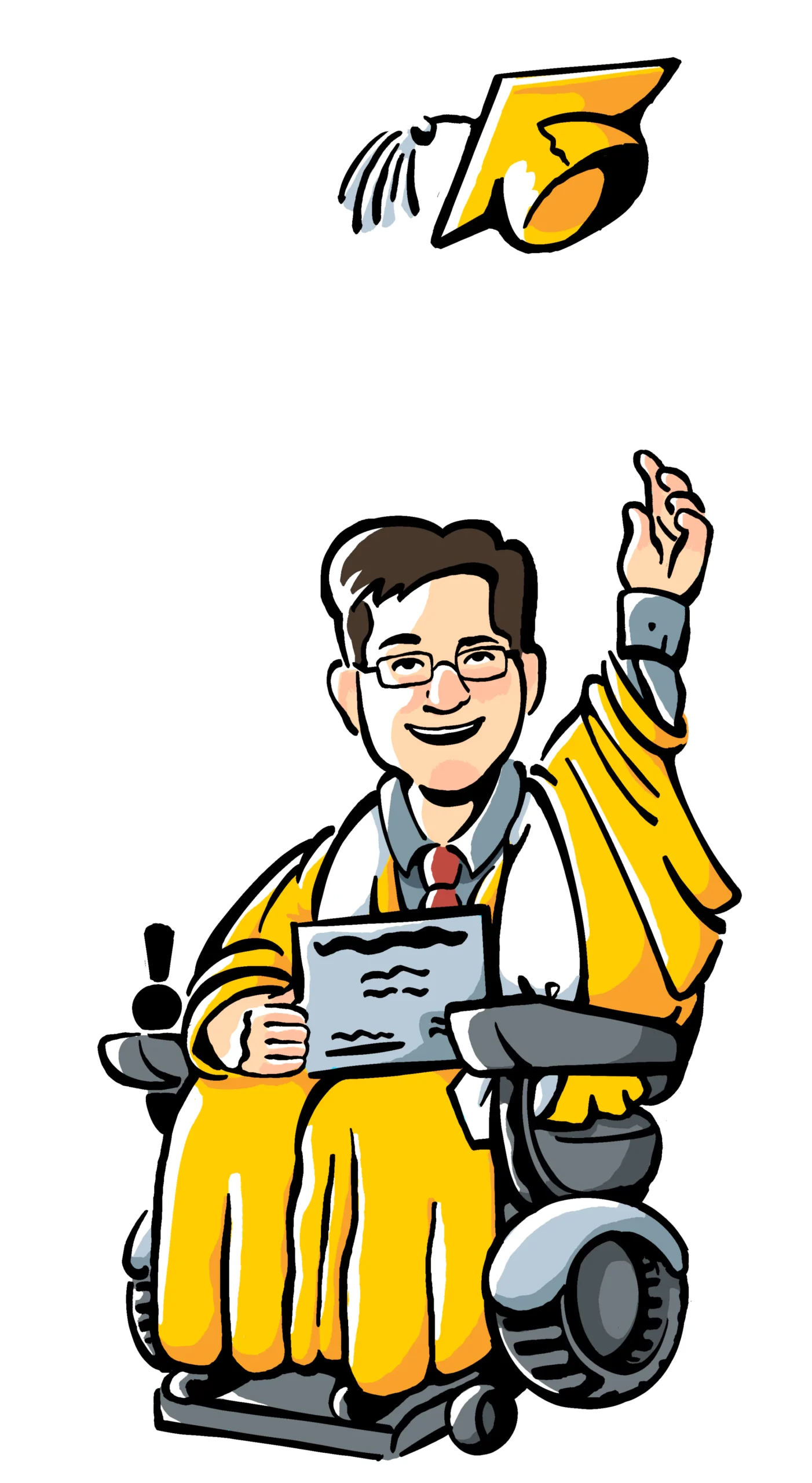 When you are a student with disabilities trying to navigate the college process, sometimes it feels as though someone has thrown you off a cliff surrounded by jagged rocks and told you to “aim for the water.”
When you are a student with disabilities trying to navigate the college process, sometimes it feels as though someone has thrown you off a cliff surrounded by jagged rocks and told you to “aim for the water.”
It is understandably stressful. It is undeniably confusing. It is unnecessarily complicated. It is unfair that everyone else just applies to college, finds housing, registers for classes, and then is all but done (at least from your perspective).
It can seem hopeless, like no matter how much you research, reach out, and request help, you will not be able to attend college as a “normal” student.
I know this feeling. I have a neuromuscular condition called Spinal Muscular Atrophy (SMA) Type III. It is a genetic condition where you are missing the gene that nourishes, sustains, and powers your motor neurons (nerves that control movement). Without these nerves, you move less, and thus your muscles atrophy.
I only tell you that so you know that this is not some random stranger on the internet trying to take advantage of you. I’m navigating this process as I’m writing this article. I am a wheelchair-dependent high school senior trying to figure out how I can live a relatively normal life; like you, I want to go to college, get a degree, have a career, and contribute to the world.
All this is difficult enough for an able-bodied person, let alone one with a disability. But the reality is, there are many resources that can be incredibly helpful in this process. The hard part is figuring out which you can benefit from. How can you know which ones will help you?
In this article, I will cover several common disabilities, resources and tools for those disabilities, accommodations for standardized tests, laws and rights for those with disabilities, government agencies that help those with disabilities, and a few more general tips for college.
I already have used some of these resources myself and intend to use more as I get further into the college process. I hope this will help you graduate from college with flying colors, as these tools have already helped me.
Types of Disabilities and Corresponding Resources
Before we get into general accommodations for tests and college, I will provide you with a brief overview of (somewhat) common disabilities and related resources for those disabilities.
You will hear about cognitive and learning disabilities, sensory impairments, physical disabilities, and speech disorders.
Cognitive and Learning Disabilities and Disorders
Cognitive disabilities refer to a broad range of conditions that include intellectual disabilities, neurodevelopmental disabilities, mental illness, brain injuries, and strokes. They can be related both to IQ and functional ability.
Learning disabilities affect the acquisition of knowledge and/or skills, such as reading, writing, and math. These include dyslexia, dysgraphia, and dyscalculia.
Although your particular condition may not be included below, many of the services and tools shown may still be beneficial. According to Statista, around 23.6% of college students in the fall of 2022 had Attention Deficit/Hyperactivity Disorder, Autism Spectrum Disorder, a learning disability, or a speech/language disorder.
Attention Deficit/Hyperactivity Disorder
ADHD is one of the most common disabilities. According to Statista, around 15% of college students had ADHD in the fall of 2022. Some symptoms of ADHD are inattention, impulsivity, and hyperactivity. Students with ADHD may have problems staying on task, daydreaming, not paying attention, acting without much thought of consequences, or being overly active.
Credible sources on ADHD
- Learn About Attention-Deficit/Hyperactivity Disorder (ADHD) | CDC – For more statistics, symptoms, and other related information, look at the CDC.
- Understanding ADHD – CHADD – Children and Adults with Attention Deficit/Hyperactivity Disorder (CHADD), the National Resource Center on ADHD, is one of the most comprehensive resources on ADHD.
- What Do We Really Know about ADHD in College Students? – PMC – This has many statistics and research-based information on ADHD. It also mentions a few potential treatments and accommodations for students with ADHD.
- How Can We Improve Outcomes for College Students with ADHD? – This has many evidence-based pieces of information on ADHD.
- What is ADHD? | CDC – This offers an overview of ADHD and its symptoms.
Resources and Tips to Help Students with ADHD
- Assistive Technology for Children With ADHD – This website does not recommend anything specific, but it has several general suggestions on types of technology to look at.
- Testing Accommodations for Students with ADHD – This article explores the various testing accommodations available for students with ADHD.
- ADHD tools and apps for students | Speechify – This website recommends many specific tools like apps, assistive technologies, and other recommendations.
- 15 Best Assistive Learning Tools for Students with ADHD – These are also many different, specific tools for ADHD.
- 10 Best Assistive Technologies for ADD/ADHD | Disability Credit Canada – Although not well-formatted, this website lists specific apps and pieces of technology that help with ADHD in school.
- Succeeding in College with ADHD – CHADD – This page from CHADD has many tips, from social life to academics to staying organized.
- NIMH » Attention-Deficit/Hyperactivity Disorder – This also has several recommendations for treatments and systems to help you stay on task.
- 7 Tips for College Students With ADHD – This has several very doable tips for being organized in college.
Autism Spectrum Disorder
A developmental disability, ASD symptoms may include problems with social communication and restricted behaviors or interests, but there are many possible symptoms or levels of autism. Some with ASD may have advanced conversation skills, while others may be nonverbal. According to Statista, in 2022, 2.9% of college students had ASD.
Credible sources on ASD
- Autism Spectrum Disorder (ASD) | Autism | NCBDDD | CDC – The National Center on Birth Defects and Developmental Disabilities (NCBDDD), a part of the CDC, has symptoms, data, statistics, and treatments for ASD.
- Learn More about Autism | The Administration for Children and Families – This has a list of several more places where you can learn more about ASD.
- Autism spectrum disorder – Symptoms and causes – Mayo Clinic – This has a list of early symptoms of ASD.
- What is Autism? – Autism Research Institute – This has a list of symptoms and resources to diagnose ASD.
Resources and Tips to Help Students with ASD
- 8 Tips for College Success for those on the Autism Spectrum – Written by a highly accomplished former student with ASD, this article has very practical recommendations on how to succeed in college.
- NIMH » Autism Spectrum Disorder – This has several recommendations to make life in general with ASD a bit easier.
- Assistive Technology for Students with Autism Spectrum Disorders – The National Association of Special Education Teachers (NASET) has many suggestions for assistive technology that can help to function with ASD.
- Assistive Technology for Autism: Tools and Benefits – This also has suggestions for assistive technology.
Dyslexia
Dyslexia is an unexpected difficulty with reading for someone who is intelligent enough to otherwise be a good reader. People with dyslexia have trouble matching the letters they see on the page with the sounds those letters and combinations of letters make.
There are other similar disorders, such as dysgraphia and dyscalculia, but those are less well-known/common. If you have dysgraphia, dyscalculia, or other related disorders, however, you may still benefit from the resources below.
Credible sources on Dyslexia
- International Dyslexia Association – This website has many resources on dyslexia.
- Complete Guide to Dyslexia – Child Mind Institute – This website has a good summary on dyslexia and recommended ways to improve reading ability.
- Dyscalculia, Dysgraphia, Dysnomia, Dyslexia, and Dyspraxia: What are the Differences? – The Edvocate – This has information on dyslexia, dysgraphia, and dyscalculia.
- Dyslexia: What It Is, Causes, Symptoms, Treatment & Types – This is a comprehensive guide to dyslexia and treatments.
Resources and Tips to Help Students with Dyslexia
- Understanding Dyslexia and How to Help Kids Who Have It – This website has many recommended accommodations for the classroom.
- 7 Tips and strategies for working with dyslexia – Although directed toward people with dyslexia in the workforce, there are many tips here that can also make day-to-day life in college easier.
- Overcoming Dyslexia – This book has a lot of evidence-based tips on the best colleges for dyslexic students, how to improve reading skills, and assistive technology.
- The Best Assistive Technology for Dyslexics | WIRED – This has many recommendations of programs and gadgets for those with dyslexia.
- Seeing AI on the App Store/Seeing AI App from Microsoft – This uses the camera and optical character recognition (OCR) to turn images into machine-readable text. These types of text-to-speech apps mostly benefit individuals who are blind or visually impaired but can also benefit individuals with a reading disability like dyslexia.
- Learning Ally – This is a site where you can find audiobooks of textbooks (assuming you provide documentation of your disability).
- Bookshare – This operates similarly to Learning Ally as an audiobook database.
Epilepsy
Epilepsy is a chronic brain disorder that is known to cause seizures. These seizures can be generalized, affecting all of the brain, or focal, affecting only part of the brain. Many different conditions can cause epilepsy, such as a tumor, stroke, head injury, or nervous system infection. In 2015, about 1.2% of the US population had active epilepsy, according to the CDC.
Credible sources on Epilepsy
- Epilepsy | CDC – This has statistics, an overview of epilepsy, and research information.
- EPILEPSY 101 – EpilepsyU – This has a more in-depth description of the causes of epilepsy.
- Epilepsy: Symptoms, Causes, and Treatments – This has a general overview of epilepsy and some treatment options.
Resources and Tips to Help Students with Epilepsy
- Managing Epilepsy Well Checklist | CDC – This has many general tips for how to manage epilepsy.
- Navigating Life with Epilepsy – This book has comprehensive information on epilepsy and how to manage life well.
- 8 Ways to Manage Epilepsy – This website has several practical ways to manage epilepsy better.
- Pursuing a Higher Education Poses Unique Challenges for Those with Epilepsy – This website has specific tips for navigating college with epilepsy.
- Attending a College | Epilepsy Foundation – There are several general tips for navigating college with epilepsy here.
Speech Disorders or Impairments
Speech disorders affect a person’s ability to form audible words. They can include stuttering, verbal apraxia, or dysarthria. Some speech disorders can be caused by hearing impairments, neuromuscular disorders, or brain injuries. According to Statista, around 1.1% of college students had some form of speech or language disorder in the fall of 2022.
Credible sources on Speech Impairments
- Quick Statistics About Voice, Speech, Language | NIDCD – The National Institute on Deafness and other Communication Disorders (NIDCD) has a lot of information on voice, speech, language, and swallowing disorders.
- Adult Speech Impairment: Types, Causes, and Treatment – This offers an in-depth explanation of different speech disorders and their causes.
Resources and Tips to Help Students with Speech Impairments
- Augmentative and Alternative Communication (AAC) – The American Speech-Language Association (ASHA) has a lot of information on speech impairments, but they also have a list of general assistive technologies that may be helpful.
- Assistive Technology: Communication Products – Physiopedia – Although some of these technologies are geared towards those with difficulty communicating due to hearing impairments, many of them are still beneficial to those with stand-alone speech impairments.
Sensory Impairments
Sensory impairments include deafness, blindness, severe visual impairments, severe hearing impairments, and deafblindness. According to Statista, around 5.6% of college students in the fall of 2022 had low vision or hearing loss.
Blindness and Visual Impairments
Visual impairments occur in varying levels of severity and with various causes. Many different diseases, age-related disorders, and injuries can cause visual impairment, including macular degeneration, cataracts, diabetic retinopathy, glaucoma, amblyopia, and strabismus.
Some people who are severely visually impaired can still technically read with high enough magnification but may benefit from many of the resources associated with people who are completely blind. In the fall of 2022, 3.5% of enrolled college students were visually disabled, according to Statista.
Credible sources on Blindness
- Blindness Statistics | National Federation of the Blind – The National Federation of the Blind (NFB) has many statistics on those who are visually disabled.
- Blindness (Vision Impairment): Types, Causes and Treatment – This website has a lot of information on how vision impairment can be caused and offers definitions for the different types of blindness.
- Common Eye Disorders and Diseases | CDC – This offers an in-depth description of many common causes of visual impairments.
- Glossary of Eye Conditions – This is an exhaustive list of conditions that can lead to visual impairment from the American Foundation for the Blind (AFB).
Resources and Tips to Help Students with Blindness
- Resource Guide for Students With Visual Impairments | BestColleges – This website has several recommended tips and tools to use if you are visually impaired.
- Navigating College with Visual Impairments – This has several tips and tools as well.
- Assistive Technology for Blind or Low Vision Participants – MIUSA – This website has several general recommendations on assistive technology for visual impairments.
- Aira – This is a live, human-to-human professional assistance service that delivers on-demand, skilled, and reliable visual interpreting for just about any task. Using the camera and an app on your smartphone, a trained agent will assist by visually interpreting your surroundings, from describing and reading to explaining and navigating just about anything.
- Seeing AI on the App Store/Seeing AI App from Microsoft – This is similar to Aira and uses the camera and optical character recognition (OCR) to turn images into machine-readable text. These types of text-to-speech apps mostly benefit individuals who are blind but can also benefit individuals with a reading disability like dyslexia.
- Learning Ally – This is a site where you can find audiobooks of textbooks (assuming you provide documentation of your disability).
- Bookshare – This operates similarly to Learning Ally as an audiobook database.
- JAWS® – Freedom Scientific – This is a screen reader for Windows systems.
- ZoomText – Freedom Scientific – This is a screen magnifier for Windows systems.
Deafness and Hearing Impairments
Hearing impairments also occur in varying levels of severity. There is conductive hearing loss (obstruction in the outer or middle ear), sensorineural hearing loss (inner ear or hearing nerve issues), mixed hearing loss (combination of conductive and sensorineural), and auditory neuropathy spectrum disorder (damage to inner ear issues with sound interpretation).
Disabling hearing loss is significantly more prevalent in the senior population, but there are still many deaf students of a younger generation enrolled in college. In 2019, around 1.3% of then-enrolled college students were deaf, according to the National Deaf Center on Postsecondary Outcomes (NDC). In the fall of 2022, that number was 2.1%, according to Statista.
Credible sources on Deafness
- Types of Hearing Loss | CDC – This has a very comprehensive description of the different types of deafness.
- Undergraduate Enrollment of Deaf Students in the United States – This has many statistics on deaf college students.
- Deafness and hearing loss – This also has very in-depth descriptions of the different types and causes of deafness, among other information.
Resources and Tips to Help Students with Deafness
- Resource Guide for Deaf and Hard-of-Hearing Students | BestColleges – This offers many accommodation ideas, general tips, and suggested assistive technology and software, along with many more resources.
- Resources for Deaf and Hard of Hearing College Students – This website is very similar, offering suggested accommodations, outside resources, and assistive technology. There are also application tips and scholarships.
Deafblindness
Deafblindness is pretty much what it sounds like: it involves having severe hearing and visual impairments. Helen Keller is a well-known example of someone with deafblindness.
There can be many different causes, including hereditary conditions like Down syndrome or Usher syndrome, prenatal complications like hydrocephaly or cytomegalovirus, or postnatal conditions like asphyxia, a severe head injury, or meningitis. Sometimes a person may be born blind or deaf, then acquire the other impairment later in life.
Credible sources on Deafblindness
- DeafBlindness Overview – The National Center on Deaf-Blindness (NCDB) has many resources to help better understand deafblindness.
- College Students Who Are Deaf-Blind – This offers a better point of view to see what it is like to be deaf-blind from a first-hand perspective.
- Deaf Blindness – Understanding and Supporting Learners with Disabilities – This has different diagnoses, communication methods, and assessment recommendations for people who are deaf-blind.
- What is DeafBlindness? – This offers definitions, causes, and descriptions of deafblindness.
Resources and Tips to Help Students with Deafblindness
- State Deaf-Blind Projects – Every state has a deaf-blind project. See what benefits you may qualify for from yours.
- DeafBlind Resources | National Federation of the Blind – This has links to many organizations involved with helping deaf-blind people.
- Assistive Technology | National Center on Deaf-Blindness – This has a few links to lists of recommended assistive technology.
- Understanding Assistive Technology | National Center on Deaf-Blindness – Similarly to the previous website, there are lists of suggested assistive technologies.
- Understanding Assistive Technology: How Do Deaf-Blind People Use Technology? | Level Access – This has a list of general recommendations for assistive technology.
- Communication Products for People Who Are Deafblind – This website is a bit more specific and also explains how the technology works more thoroughly.
Mobility and Dexterity Impairments
Mobility and dexterity impairments are impairments in a person’s body structure or function, separate from sensory impairments. These can include neuromuscular conditions, such as muscular dystrophy, spina bifida, and cerebral palsy, or musculoskeletal conditions, such as amputations, spinal disorders or injuries, dwarfism, multiple sclerosis, and joint deformities.
According to Statista, 1.5% of college students in 2022 had a mobility or dexterity disability.
Credible sources on Mobility Impairments
- Physical & Mobility Impairments: Information & News – This offers a lot of specific information and explanations on mobility impairments.
- Mobility and Physical Disabilities – This offers comprehensive definitions and a few general assistive technology and accommodation recommendations.
- Physical and Mobility Impairment Information Document List – This has a list of articles focused on different causes of mobility impairments.
- Difference Between Neuromuscular And Musculoskeletal Disorders – This offers a specific explanation of the difference between neuromuscular and musculoskeletal conditions.
Resources and Tips to Help Students with Mobility Impairments
- Mobility Impairments | DO-IT – Disabilities, Opportunities, Internetworking, and Technology (DO-IT) offers recommended accommodations for students with mobility impairments.
- Physical and Mobility Disability: Common Assistive Technology – This offers a few more creative and specific recommended assistive technologies.
- These Smart Home Devices Can Enhance Independence for People With Disabilities and Mobility Needs – This is an exhaustive list of assistive technologies to make living independently easier. They also offer explanations for why they recommend each gadget.
- Stay Independent With These Assistive Technologies – This website also has a long list of general recommended assistive technologies for many types of disabilities.
Standardized Test Accommodations
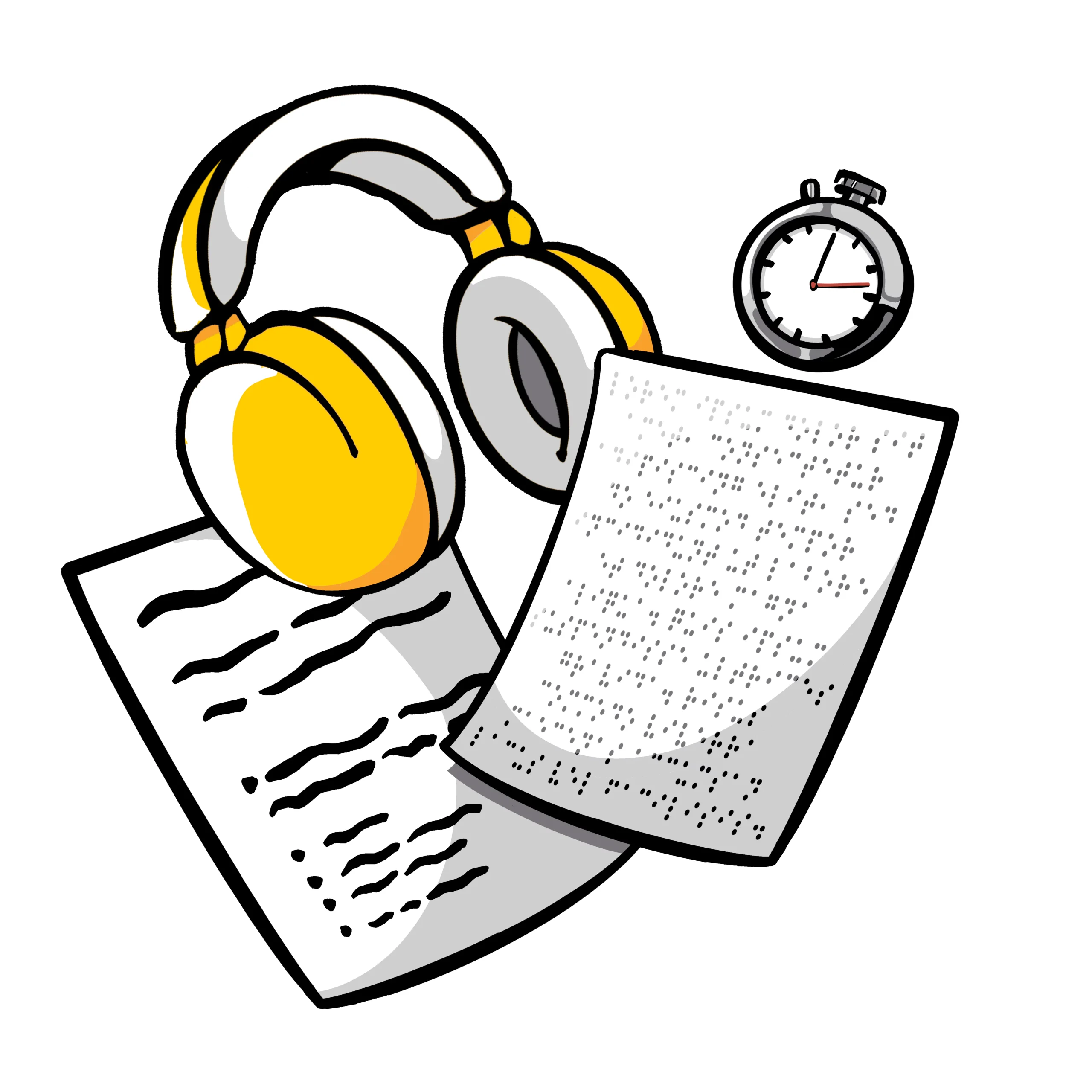
Before you even apply to college, you should decide whether you will take an entrance exam like the SAT or ACT (ideally during your sophomore year, so you have time to take it multiple times if need be).
According to BestColleges and Forbes, at least 1,700 out of the 4,000 colleges in the United States are test-optional now (or will be soon), although often, there are certain requirements to be a test-optional applicant, such as having a high GPA or class rank.
This can be great if you have a disability that makes taking standardized tests more difficult, but it may still be worth it to take the test. If you do not submit a test score, then other parts of your college application will matter more, such as your GPA, college essay, awards, achievements, references, or extracurricular activities.
If you feel that you have a strong enough college application without test scores, then you may not need to take it. On the other hand, if your college application is not very impressive (or if you just want the extra kudos of a high test score), you should consider applying for accommodations as soon as possible.
I got accommodations for both the PSAT and ACT, even though my scores were already decent. With the accommodations, both scores increased by around 20%.
Most widely used standardized entrance tests (such as ACT, AP, CLT, GED, PSAT, or SAT), course-specific tests, (such as AP or CLEP), and even some graduate school entrance tests (such as GMAT or GRE) offer some form of accommodations, especially if you provide documentation of your disability from a physician.
Keep in mind that when you apply for accommodations, you will probably not receive them immediately, so schedule your testing day accordingly.
For example, CollegeBoard (which can administer the AP, ACCUPLACER, CLEP, PSAT, and SAT tests) may take up to 7 weeks to approve the accommodation. They may also deny the accommodation, but if you provide additional, more thorough documentation of your disability, you could possibly still get the accommodations.
The most common accommodation is 50% more time (e.g., if you would normally have 60 minutes to take a test, instead you would have 1 hour and 30 minutes to take the test).
There are also accommodations such as having a scribe, a reader, prerecorded audio, extra breaks, larger print, a magnification device, a test in braille with raised diagrams, speech-to-text, a printed copy of oral instructions, colored overlays, and many others.
If you consider taking a standardized test, be sure to check the website of whatever company or organization administers it to see what accommodations you may qualify for and benefit from.
Laws Related to Disabilities
 This next part may sound cliché, but I will say it anyway. Know your rights. There are so many federal and state laws that are beneficial to people with disabilities, but people do not take advantage of them simply because they do not know about them.
This next part may sound cliché, but I will say it anyway. Know your rights. There are so many federal and state laws that are beneficial to people with disabilities, but people do not take advantage of them simply because they do not know about them.
Americans with Disabilities Act (ADA)
For example, most people have heard of the Americans with Disabilities Act, also called the Americans with Disabilities Act Amendments Act (ADAAA), but few people know what is actually said in it.
Disabilities should not diminish a person’s right to participate fully in all aspects of society, so Congress created the ADA to eliminate “discrimination against individuals with disabilities.”
The ADA prohibits discrimination against people with disabilities, and all but requires equal access in nearly all aspects of society, including employment, education, transportation, communication, and all places open to the general public.
These are excellent resources to turn to if you have any questions about pretty much anything regarding the ADA:
Section 504
Another important law is Section 504 of the 1978 Rehabilitation Act. Section 504 prohibits disability-based discrimination by employers and organizations that receive financial assistance from any Federal department or agency (and colleges).
As long as you are qualified, an employer or college cannot deny you based solely on your disability. There may be other things that disqualify you, but the disability must not be the primary factor.
These are excellent resources to turn to if you want a summary of Section 504, or if you have any questions:
Individuals with Disabilities Education Act (IDEA)
The IDEA has provisions about grants that assist states in providing free public education that is unrestrictive to children with disabilities, grants that assist states in providing early intervention services, and discretionary grants to support state personnel development, technology, and more information.
For answers to frequently asked questions regarding the IDEA, look here:
Technology-Related Assistance for Individuals with Disabilities Act (Tech Act)
Finally, we have the Technology-Related Assistance for Individuals with Disabilities Act (Tech Act). This was created to make it easier for people with disabilities to select, obtain, and use assistive technology.
There are many examples of assistive technology, from motion-tracking technology to a magnifying glass to screen readers. Anything that makes life easier for people with disabilities qualifies as assistive technology.
With this policy in mind, find out who is the lead agency for your state’s Assistive Technology Project. Find providers of assistive technology and demonstrations if you would like to learn more or get assistive technology for yourself.
For help contacting your state’s Assistive Technology Program, visit the AT3 Center. If you would like to learn more, take a look at these resources:
Government Agencies and Personnel that Enforce and Help Create These Laws
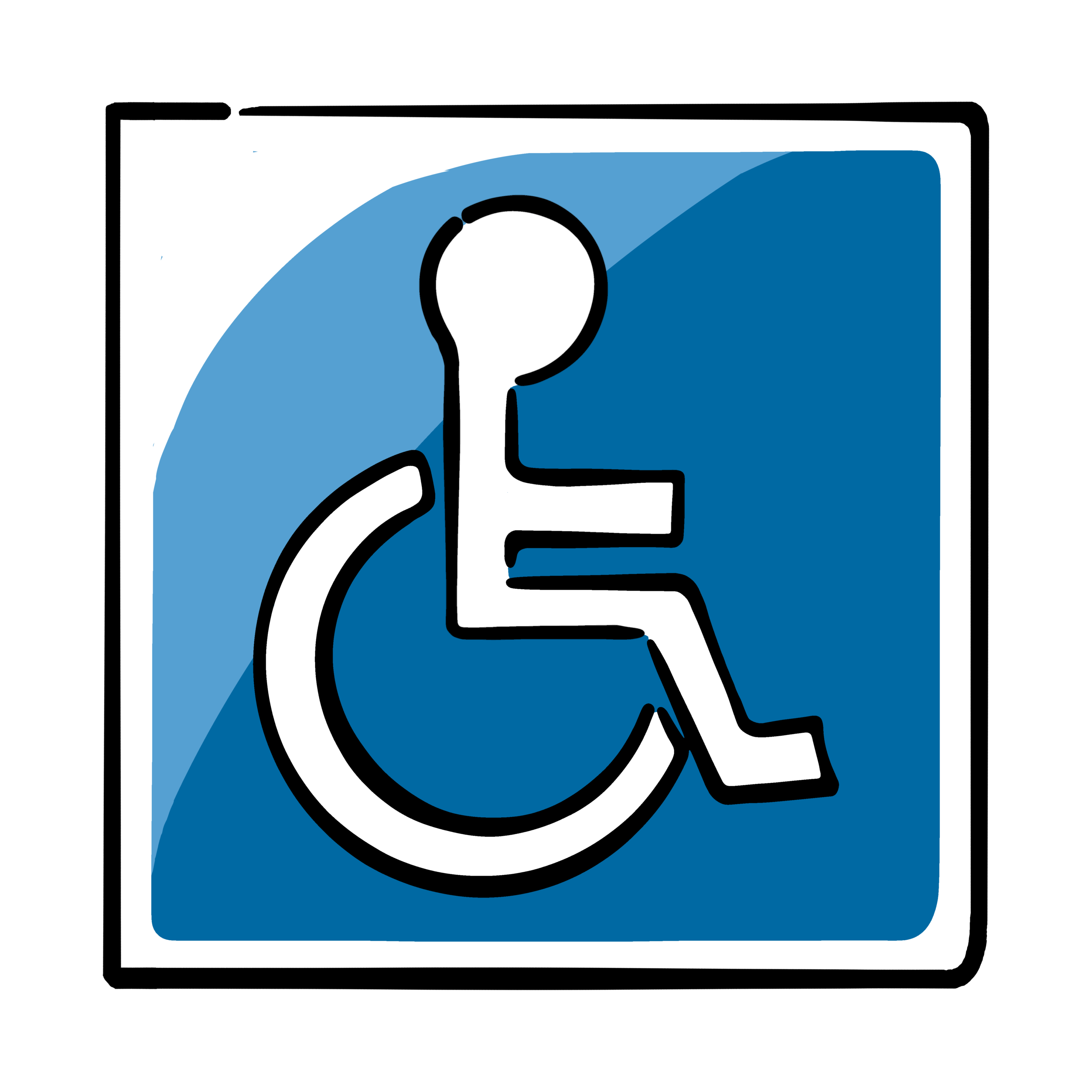
So now you know how to find your rights, but who enforces these laws? If someone were to be noncompliant and ignore your requests for accommodations, who should you contact?
ADA and 504 Coordinators
All state or government entities that employ at least 50 employees are required to have at least one ADA or 504 coordinator. This includes universities.
An ADA and 504 coordinator are sometimes the same person. They are well-versed in a wide range of disabilities, the ADA, Section 504, and potential accommodations for people with disabilities. Their job is to plan and coordinate compliance efforts for those laws.
If you have an issue with a specific entity that is required to comply with the ADA or Section 504, contact the ADA or 504 coordinator.
You can learn more about ADA and 504 coordinators here:
Federal Agencies
ADA National Network has a list of the different agencies that enforce the ADA for you to contact if there is an instance of noncompliance.
These agencies include the US Department of Justice (DOJ), the US Access Board, the US Department of Transportation (DOT), the Federal Communications Commission (FCC), the US Department of Housing and Urban Development (HUD), and the Federal Emergency Management Agency (FEMA).
When there is a disability-related issue in any of these areas, you can file a complaint with the respective agency. In college, however, there are other people you can sometimes contact, and I will tell you about those later.
There is also the Office for Civil Rights (OCR) within the US Department of Education that enforces Section 504 (and other anti-discrimination education laws).
Local Agencies
In most states, there is a workforce agency of some sort (they can be called workforce commissions, workforce departments, employment commissions, labor departments, and employment departments, among other things).
Look up the Medicaid program in your state, enforced by your state workforce commission, and see if you are eligible. I am actually working on this myself, currently.
The Medicaid program helps with costs that would prevent a person with disabilities from joining the workforce, from hospital costs to personal care attendants to assistive technology to a handicap-accessible vehicle, etcetera, etcetera.
Get in touch with your local workforce agency representative.
Local Committees
There are committees for people with disabilities all over the United States. They can operate at the federal, state, or local level. There is a National Council on Disability, there are Governor’s Committees on People with Disabilities, and sometimes there are Mayor’s and County Committees on People with Disabilities.
Not every state or city has something like this, but see if there is something similar in your area. If there is not something like this, check with your local government to see if you can start a committee or something similar.
Often, there is an opportunity to provide public comment if you have seen an issue and would like the government to fix it in the future.
If the committee believes your issue is legitimate and that a law could be created (or amended) to fix it, then they will recommend a policy to the bodies of legislature they work with.
So if you present a comment to a Governor’s Committee, they may recommend a related policy that helps with the issue to the state Senate and House of Representatives at the next biennial meeting.
If you present a comment to a Mayor’s Committee, they will often recommend a policy to the mayor or city council.
I currently serve on the Governor’s Committee on People with Disabilities here in Texas. It is one of the best things I have ever experienced. Every meeting, I hear stories about places where people with disabilities are ignored. It has helped me see past injustices I personally experience to see the issues of other people with disabilities.
That’s how I know that these committees rely on the insight of local people with disabilities to identify issue areas. When you speak up, you can make a difference. If you see something, say something.
General Tips for Navigating College with Disabilities
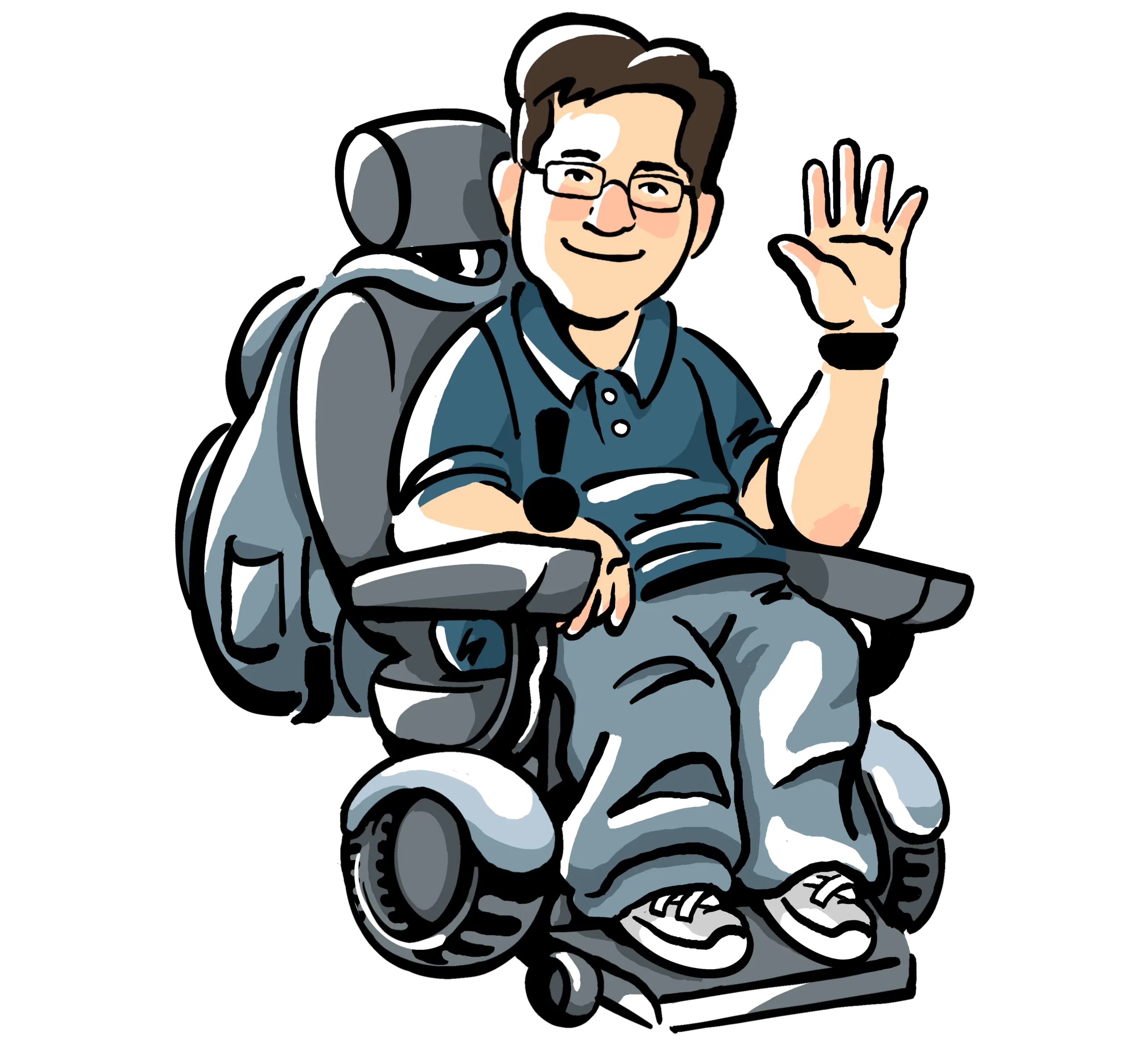 This final section consists of three main pieces of advice.
This final section consists of three main pieces of advice.
College Faculty and Accommodations
First, connect with the Department of Disabilities (or equivalent) at the college you want to attend. If you are having trouble finding them, try looking up your college on the Campus Disability Resource Database (CeDaR).
Ask them about accommodations, potential problems and workarounds, and the potential benefits of being disabled there. Often, you can get accommodations for tests, early class registration, fewer hours with full-time status, and other benefits.
Build a relationship with your disability coordinator. Learn how to communicate your disabilities effectively in advance, so you can be properly accommodated.
When you actually attend college, make sure that your professors know about any accommodations you need. If they do not comply, tell your disability coordinator.
Ultimately, however, it will be up to you to ensure you are given an equal chance at education. You must be able to self-advocate. Although it is written for parents, Understood.org has recommendations on what to do (and what not to do) if you do not receive appropriate accommodations.
For more information on disability services at colleges, look at NCCSD.
High School Student Toolkit: A Guide to College Success
Get expert tips on acing college applications, preparing for tests, managing finances, and navigating college life. Your guide to success starts here!
Social and Personal Connections
Second, connect with students (or faculty members) at that college and in that community who also have similar disabilities, or any disabilities at all. They will probably know the ins and outs of day-to-day life with disabilities even better than the department of disabilities will.
One of the things that will help you succeed the most in college is simply asking for help. Never be afraid to ask for help.
Ask for someone to help you learn what you need to know about the disability accommodations. Ask for friends to help you do things you cannot do by yourself, whether it is retrieving books, taking notes, or telling you what someone or something says.
I have done several of these things myself, and I can tell you that it works. When you find people like you or who are willing to help you, and you get connected to them, it is exponentially easier to navigate day-to-day life.
It is worth noting that in order for this to work, you must understand your limitations well, and you must be able to effectively and efficiently communicate these to someone who may help you.
Build your social circle—your community—and you will have a much easier time.
Scholarships
Finally, look for scholarships for your disability. For example, Scholarships.com, Niche, BestColleges, Scholarships360, Affordable Colleges, and many other scholarship databases have comprehensive lists of scholarships specifically for those with disabilities.
For more resources on attending colleges, helpful organizations, scholarships, services, research, and accommodations, look at College Consensus, NCCSD, and the Association of University Centers on Disabilities (AUCD).
Farewell
In closing, there are countless resources for those with disabilities if you are willing to look. If you see something, say something. Never be afraid to ask for help. Learn your rights. Above all, remember: you are not alone.
Sources
- 7 Tips and strategies for working with dyslexia
- 7 Tips for College Students With ADHD
- 8 Tips for College Success for those on the Autism Spectrum
- 8 Ways to Manage Epilepsy
- 10 Best Assistive Technologies for ADD/ADHD | Disability credit canada
- 15 Best Assistive Learning Tools for Students with ADHD
- About Accommodations
- About OCR
- Accommodations – GED
- Accommodations for AP Exams
- Accommodations for Test Takers with Disabilities
- ADD vs. ADHD
- ADHD tools and apps for students | Speechify
- Adult Speech Impairment: Types, Causes, and Treatment
- Aira
- Allowable ACT Accommodations and English Learner (EL) Supports
- Americans with Disabilities Act of 1990, As Amended | ADA.gov
- Americans with Disabilities Act | US Department of Labor
- An Overview of the Americans With Disabilities Act | ADA National Network
- Assistive Technology Act | Center for Parent Information and Resources
- Assistive Technology Act Fact Sheet
- Assistive Technology: Communication Products – Physiopedia
- Assistive Technology for Autism: Tools and Benefits
- Assistive Technology for Blind or Low Vision Participants – MIUSA
- Assistive Technology for Children With ADHD
- Assistive Technology for Students with Autism Spectrum Disorders
- Assistive Technology | National Center on Deaf-Blindness
- AT3 Center
- Attending a College | Epilepsy Foundation
- AUCD
- Augmentative and Alternative Communication (AAC)
- Autism Spectrum Disorder (ASD) | Autism | NCBDDD | CDC
- Autism spectrum disorder – Symptoms and causes – Mayo Clinic
- Blindness Statistics | National Federation of the Blind
- Blindness (Vision Impairment): Types, Causes and Treatment
- Bookshare
- Campus Disability Resource Database
- COE – Students With Disabilities
- College Board Accommodations
- College Enrollment Statistics [2023]: Total + by Demographic
- College Scholarships For Students With Disabilities
- College Students Who Are Deaf-Blind
- Common Eye Disorders and Diseases | CDC
- Communication Products for People Who Are Deafblind
- Complete Guide to Dyslexia – Child Mind Institute
- Data & Statistics on Autism Spectrum Disorder | CDC
- Data and Statistics About ADHD | CDC
- Deaf-Blindness Overview
- DeafBlind Resources | National Federation of the Blind
- Deaf Blindness – Understanding and Supporting Learners with Disabilities
- Deafness and hearing loss
- Disabilities among college students US 2022 | Statista
- Disability Impacts All of Us Infographic | CDC
- Dyslexia: What It Is, Causes, Symptoms, Treatment & Types
- Dyscalculia, Dysgraphia, Dysnomia, Dyslexia, and Dyspraxia: What are the Differences? – The Edvocate
- EPILEPSY 101 – EpilepsyU
- Epilepsy | CDC
- Epilepsy Data and Statistics | CDC
- Epilepsy: Symptoms, Causes, and Treatments
- Federal Agencies and Resources | ADA National Network
- Foundation Requirements Descriptions – ADA Coordinator Training Certification Program (ACTCP)
- Glossary of Eye Conditions
- Going Through College With High Functioning Autism
- GRE Accommodations: What You Need to Know
- Guide to Disability Rights Laws | ADA.gov
- How are testing accommodations handled? – CLEP | College Board
- How Can We Improve Outcomes for College Students with ADHD?
- How to Provide Documentation – Accommodations | College Board
- IDEA: Questions and Answers on Discipline Procedures (PDF)
- International Dyslexia Association
- JAWS® – Freedom Scientific
- Know Your Dates and Deadlines – Accommodations | College Board
- Learn About Attention-Deficit / Hyperactivity Disorder (ADHD) | CDC
- Learning Ally
- Learn More about Autism | The Administration for Children and Families
- Managing Epilepsy Well Checklist | CDC
- Mobility and Physical Disabilities
- Mobility Impairments | DO-IT
- More Than 80% Of Four-Year Colleges Won’t Require Standardized Tests For Fall 2023 Admissions
- Musculoskeletal Disabilities that Qualify for SSD
- National Center for College Students with Disabilities
- National Council on Disability
- NASWA State Workforce Agencies
- Navigating College with Visual Impairments
- Navigating Life with Epilepsy
- Niche Scholarships Students with Disabilities
- NIMH » Attention-Deficit/Hyperactivity Disorder
- NIMH » Autism Spectrum Disorder
- Overcoming Dyslexia
- Physical & Mobility Impairments: Information & News
- Physical and Mobility Disability: Common Assistive Technology
- Physical and Mobility Impairment Information Document List
- Pursuing a Higher Education Poses Unique Challenges for Those with Epilepsy
- Quick Statistics About Voice, Speech, Language | NIDCD
- Requesting Accommodations | The ACT Test
- Resource Guide for Deaf and Hard-of-Hearing Students | BestColleges
- Resource Guide for Students With Visual Impairments | BestColleges
- Resources for Deaf and Hard of Hearing College Students
- S.2561 – Technology-Related Assistance for Individuals With Disabilities Act of 1988 100th Congress (1987-1988)
- Scholarships By Physical Disabilities
- Scholarships for Students With Disabilities | BestColleges
- Section 504 | HUD.gov / US Department of Housing and Urban Development (HUD)
- Section 504, Rehabilitation Act of 1973 | US Department of Labor
- Seeing AI App from Microsoft
- Seeing AI on the App Store
- Speech disorders: Types, symptoms, causes, and treatment
- State Deaf-Blind Projects
- Statute and Regulations – Individuals with Disabilities Education Act
- Statute Chapter 33 – Individuals with Disabilities Education Act
- Stay Independent With These Assistive Technologies
- Succeeding in College with ADHD – CHADD
- Testing Accommodations | CLT
- Top 77 Scholarships for Disabled Students in June 2023 – Scholarships360
- The ADA National Network Disability Law Handbook
- The Americans with Disabilities Act Questions and Answers | ADA National Network
- The Best Assistive Technology for Dyslexics | WIRED
- The Best Test-Optional Colleges | BestColleges
- The Complete Guide to College for Students with Disabilities
- The Role of the Section 504 Coordinator: Developing and Implementing Compliance
- These Smart Home Devices Can Enhance Independence for People With Disabilities and Mobility Needs
- Types of disabilities | Aruma
- Types of Hearing Loss | CDC
- Undergraduate Enrollment of Deaf Students in the United States
- Understanding ADHD – CHADD
- Understanding Assistive Technology: How Do Deaf-Blind People Use Technology? | Level Access
- Understanding Assistive Technology | National Center on Deaf-Blindness
- Understanding Dyslexia and How to Help Kids Who Have It
- US Childhood Disability Rate Up in 2019 From 2008
- What are a public or private college-university’s responsibilities to students with disabilities? | ADA National Network
- What Do We Really Know about ADHD in College Students? – PMC
- What is ADHD? | CDC
- What is Autism? – Autism Research Institute
- What is DeafBlindness?
- What is Dyslexia?
- When College Professors Refuse Accommodations: 5 Things to Know
- YOUR RIGHTS UNDER SECTION 504 OF THE REHABILITATION ACT What Is Section 504? Who Is Protected from Discrimination?
- ZoomText – Freedom Scientific
